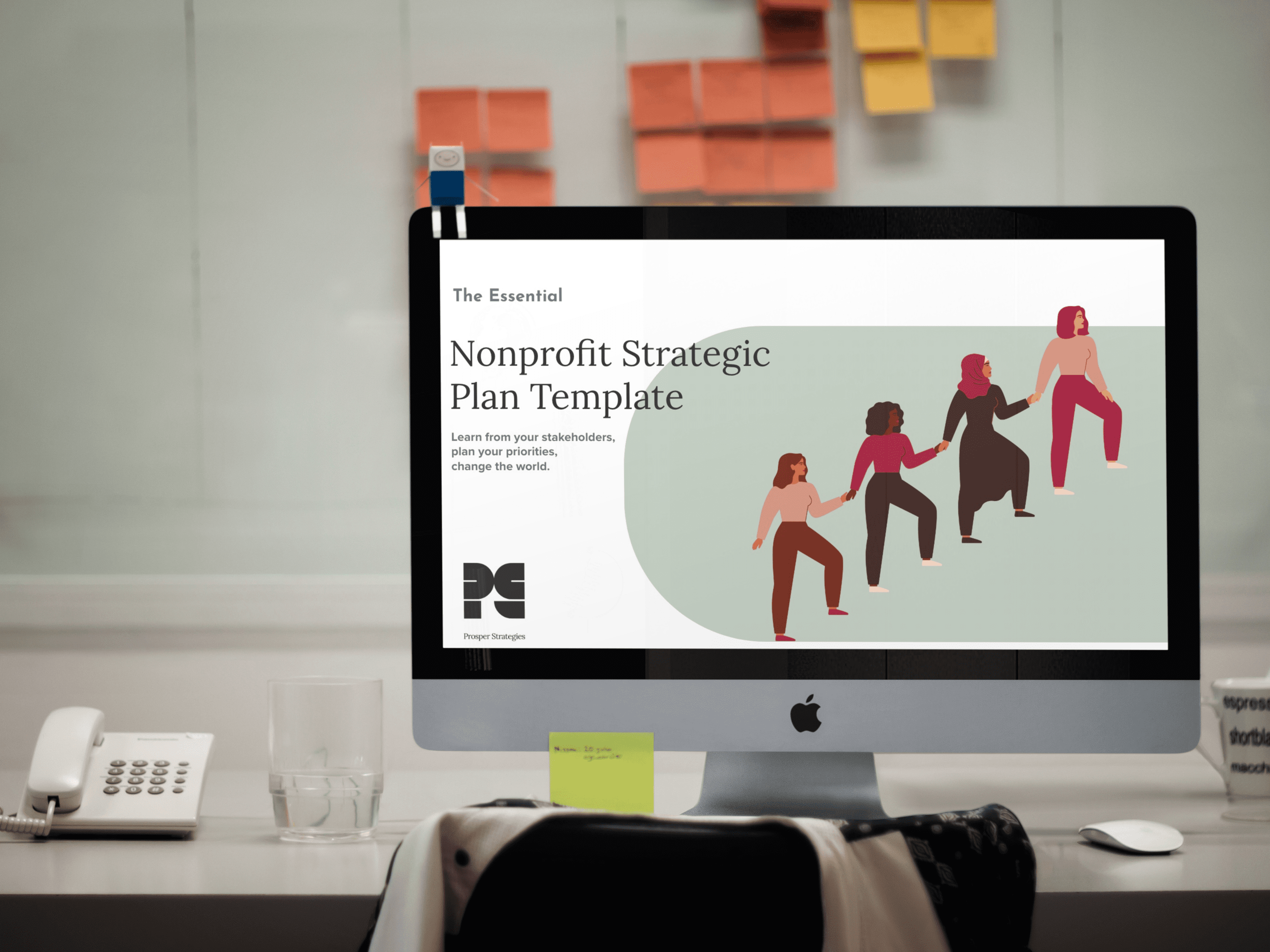While the average strategic planning process takes between four and six months, if you’re looking to develop a new strategic plan in time for 2022, there’s still time if you start now! In this post, I’ll review some of the things you’ll want to have in place to get your process off on the right foot.
Gather your materials and strategic planning research
Start by compiling materials you have on hand, including past strategic plans, stakeholder insights, financial reports, program reports and any organization-wide key performance indicators you’ve been tracking.
Now is also a good time to conduct research to set a baseline for your planning process. Reassess your nonprofit’s ecosystem by reviewing peer or comparator organizations. Pull general information about each, including their vision and mission statements, program overviews, staff sizes, budgets, etc. This information helps everyone who is part of your planning process get on the same page and can spark new ideas about possible partnerships and collaborations. And, while it’s important to understand your nonprofit’s ecosystem and how you fit in, it’s also critical to understand the specific impact your organization is positioned to make.
You’ll also want to review changes to the landscape when it comes to funding, politics, new legislation and the like that could impact the strategies you need to develop. For example, do you anticipate changes to government funding that might require your organization to think through new revenue strategies?
Compile all of this information to share with your nonprofit’s strategic planning team.
Assemble your strategic planning team
While you need a wide variety of inputs on your strategic plan, typically it’s developed by a core team at your organization. This team is often composed of your nonprofit’s leadership and select members of staff. In addition to your core working team, you might also consider building a larger committee of folks who can weigh in at key strategic checkpoints throughout the strategic planning process. This group often includes board members, key funders and partners.
Once the team is assembled, determine the roles and responsibilities for each person throughout the process to reduce confusion and create accountability. One helpful tool for making decisions about how to involve various groups is the DARCI model for project management. DARCI stands for Decider/Delegate; Accountable; Responsible; Consulted; Informed. Using a tool like this will align your core strategic planning team around how various individuals need to be involved in decision making and the final development of the strategic plan.
Determine your plan for stakeholder engagement
Once you know who will be on the core strategic planning team, determine the other stakeholders from who you need input to make your nonprofit’s strategic plan successful.
A wider array of nonprofit staff, board members, community partners, funders and the individuals your organization exists to serve should be engaged. You’ll want to seek feedback as you embark on the process, again as you develop your strategic pillars and before you finalize your plan. While it can seem like a challenge to involve such diverse groups, there are many ways to get feedback, including stakeholder interviews, surveys and listening sessions.
Develop a timeline for your strategic plan’s development
A strategic plan development timeline is where everything comes together. Your timeline should detail when your core working group will convene and what you will do at each meeting. It should also detail where you will seek input from the broader planning committee as well as your various stakeholder groups.
Reaffirm your mission, vision and values
Finally, before diving into plan development, reaffirm your organization’s vision, mission and values. These elements are so integral to your process because every decision you make should be vetted against them, so you want to make sure everyone is in alignment about the future you hope to create as an organization.
Ready to get started?

Going through the process of outlining your organization’s most important priorities and documenting them in a well thought out strategic plan is the first step in finding success.